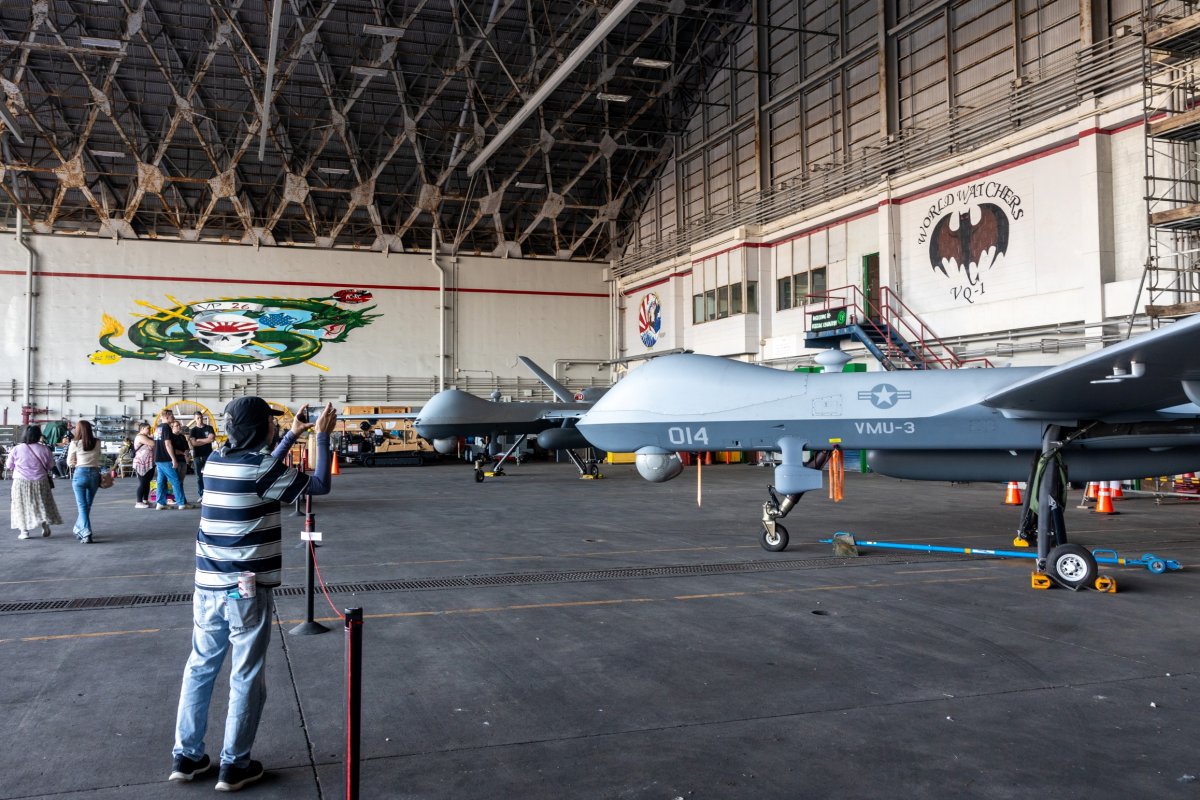Japan—a key United States ally in countering China’s military threat—has announced that the U.S. Marine Corps has decided to extend its drone deployment in the country indefinitely.
The III Marine Expeditionary Force, a Japan-based U.S. Marine Corps unit, told Newsweek on Thursday that the deployment of the MQ-9A Reaper drone provides “real-time situational awareness,” supporting American and Japanese forces.
China‘s Foreign Ministry did not immediately respond to a written request for comment.
Why It Matters
Japan is part of a north-south defensive line known as the First Island Chain, along with Taiwan and the Philippines, under a U.S. containment strategy that aims to project U.S. and allied power in the Western Pacific and restrict China’s military activity in the event of war.
Given China’s growing military presence, the Pentagon has deployed its most capable units in Japan, where over 50,000 U.S. military personnel are stationed, including F-35 stealth fighter jets and their carrier ships, a laser-armed destroyer and an unmanned logistics vessel.
What To Know
On Wednesday, the Okinawa Defense Bureau under Japan’s Defense Ministry announced the extension of the U.S. Marine Corps MQ-9A drone deployment at Kadena Air Base—a key U.S. air power hub on Okinawa Island in Japan’s southwestern waters near China.
According to a document released by the Okinawa Defense Bureau, up to six MQ-9A drones have been deployed in Okinawa since August last year, originally scheduled for one year.
“The U.S. side has recently explained that, due to the need to continue ISR [intelligence, surveillance, and reconnaissance] activities, the deployment period will be extended indefinitely,” the document read, adding that the number of drones remains unchanged.
The III Marine Expeditionary Force confirmed that an unspecified number of MQ-9A “Extended-Range Marine Air-Ground Task Force Unmanned Expeditionary Medium-Altitude, Long-Endurance remotely piloted aircraft” have been deployed to Okinawa.

Gunnery Sgt. Scott Smolinski/U.S. Marine Corps
The drone has an extended flight range of over 1,600 miles and can fly for more than 20 hours. In addition to ISR and targeting capabilities, it can provide airborne early warning and electronic support.
U.S. Air Force MQ-9 Reaper and U.S. Navy MQ-4C Triton unmanned aircraft have also been stationed at Kadena Air Base since November 2023 and April this year, respectively, a map attached to the Okinawa Defense Bureau’s document indicated.
What People Are Saying
The U.S. III Marine Expeditionary Force told Newsweek on Thursday: “Operating [the MQ-9A] from Japan provides [Marine Unmanned Aerial Vehicle Squadron (VMU) 3] with realistic domain awareness training that will increase proficiency to help provide critical support to Marines, the Joint Force, and our Japanese Allies in support of the defense of Japan.”
Japan’s Okinawa Defense Bureau commented in a document on Wednesday: “Since the deployment of the U.S. Air Force MQ-9 to Kadena Air Base in November 2023, the security environment surrounding Japan has only become more severe, making it more important than ever to further strengthen Japan-U.S. ISR capabilities.”
What Happens Next
It remains to be seen whether the U.S. will deploy additional units for ISR missions around the First Island Chain. The Japan Coast Guard has deployed MQ-9B SeaGuardian drones to monitor Chinese maritime activities near Japan’s southwestern outlying islands.